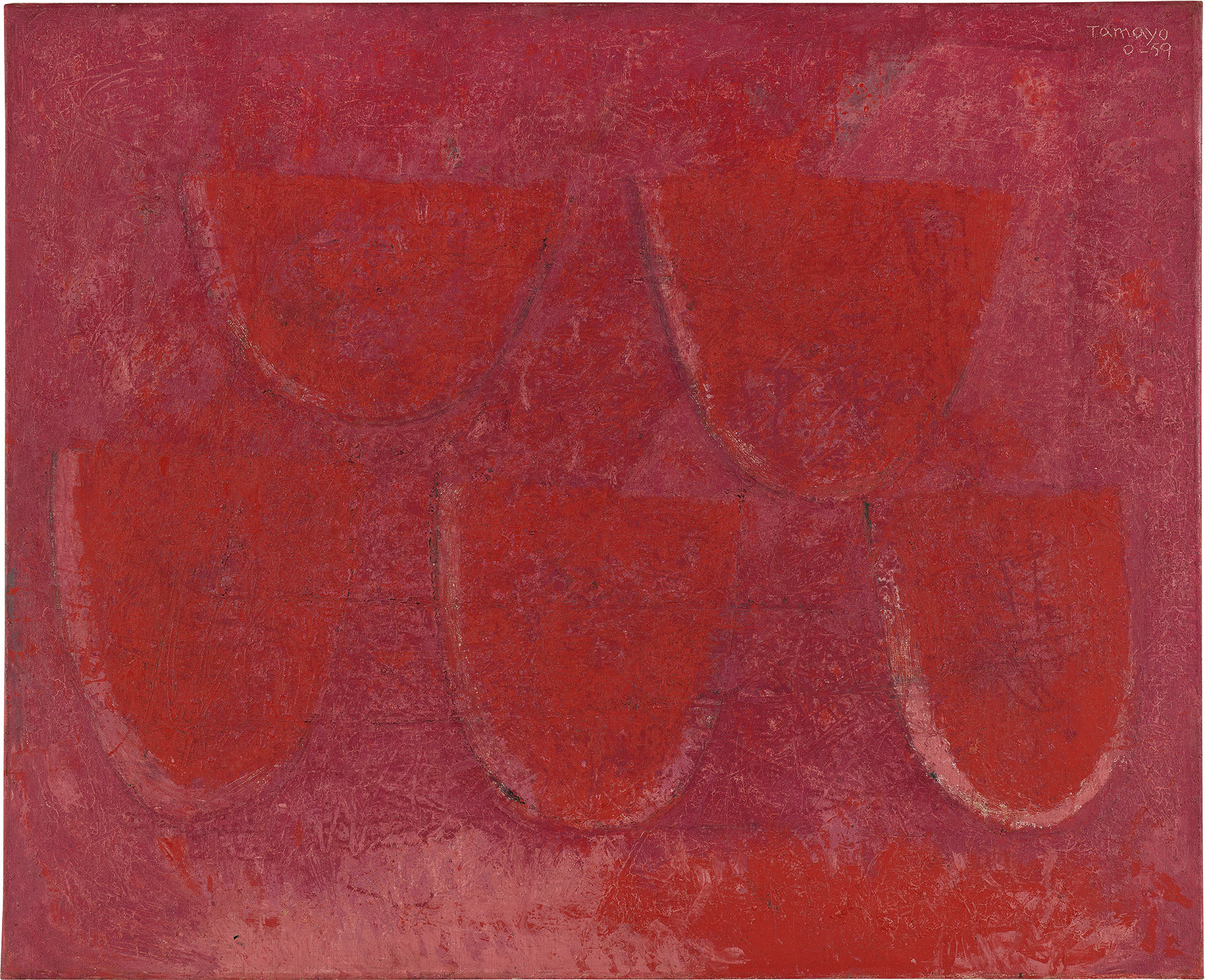

23
Rufino Tamayo
Cinco Rebanadas de Sandía
We are grateful to art historian Juan Carlos Pereda for his assistance cataloguing this work.
Full-Cataloguing
Art Historian and Deputy Director of the Museo Rufino Tamayo, Mexico City
In 1959, Rufino Tamayo’s sojourn in Europe was coming to an end. During his time in Paris, the painter experimented with his color palette, which became more complex and sophisticated, resulting in an evolution in the synthesis of his images.
Hailing from Oaxaca, Mexico, Tamayo’s recognition in Europe as a mature artist had grown exponentially at this time. Solo exhibitions of his work took place in Italy, Norway, England, France, and Switzerland and art galleries represented him in each of these countries, even as he continued to work with New York-based gallery M. Knoedler & Co., Inc.. By 1959 Tamayo’s prestige had reached a culminating point, as his paintings were acquired by important private collections and prestigious museums.
At a time when Abstract Expressionism and Art Informel dominated the international art scene, Tamayo’s art continued to be widely celebrated by the public despite the persistently representational nature of his paintings. Even as his imagery became increasingly schematic, it never leapt into complete abstraction.
This is the context in which Cinco Rebanadas de Sandía, 1959 was created. Although in essence it is a still life, a classical painting genre, it is nevertheless transformed by Tamayo’s novel and harmonious approach.
Tamayo’s still lifes such as the present work are conceived of their own set of conditions set forth by the artist. Primarily, Tamayo ushered in the reinvention of a traditional pictorial genre through his inventive approach. His singular aesthetic quality frees the object from a merely decorative function. Rendered with a stylization that sets them apart from mimesis, the fruit slices float over a shimmering field of color, whose richness derives as much from splotches in different shades of pink, red, orange, and sepia, as they do from intervening sgraffito of an expressionist nature. Combined, these elements lend the composition a dynamism that contradicts the very essence of the pictorial genre to which the painting belongs: stillness.
Cinco Rebanadas de Sandía recounts the technical and conceptual resources that Tamayo had accomplished by the date of its completion. The seemingly simple shapes allow the viewer’s attention to focus on the plastic solutions applied to form, color, and, most importantly, to the intimate way in which he approaches the space occupied by the varied shapes of the fruit. It is noteworthy that there are no two slices of watermelon alike, each piece has its own identity inside the composition, all the while resulting in a harmonic whole. In an avant-garde gesture, Tamayo has added patches of pink and red pigment to the base of the composition, as a spatial index. Barely visible green brushstrokes add chromatic balance to the surface. Regarding color, Tamayo’s unparalleled mastery in handling sophisticated spectrums of red, pink, sepia, white, and gray, placed him as a master colorist of the 20th century, as unequivocally demonstrated in this painting. The contrast between the improbable pinks and the reds, oranges, and sepias mediated by the singular “Tamayo pink,” which grazes each slice of fruit, makes this canvas one of the most characteristic examples of the artist’s mature style.
Cinco Rebanadas de Sandía was exhibited the year of its execution at Knoedler. Evidencing its importance as a key example of Tamayo’s mature period, it was chosen to grace the exhibition catalogue cover in detail, although it was mysteriously illustrated upside down. Florence Knoll Bassett purchased the work that same year and it has not been exhibited since.
Rufino Tamayo
Mexican | B. 1899 D. 1991Born in Oaxaca, Mexico, Rufino Tamayo was an incredibly prolific artist working until his death at the age of 91. Half-European and half-Zapotec Indian, Tamayo produced work that was defined by his mestizo, or mixed-blood, heritage. Through his studies, Tamayo was exposed to every artistic school of his time including Fauvism, the classical French school, Cubism and Abstract Expressionism, all of which contributed to his style as it developed throughout his life.
Tamayo reacted strongly against the Mexican muralists who dominated the art scene during his coming of age. Instead, his work is firmly grounded in realism while taking creative liberties in color and composition. His art emulates a unique blend of Cubism and Surrealism, joined with a deep understanding of Mexican culture.